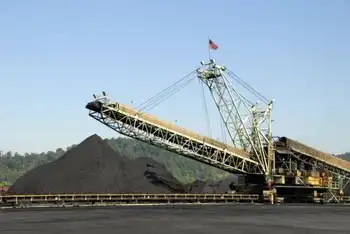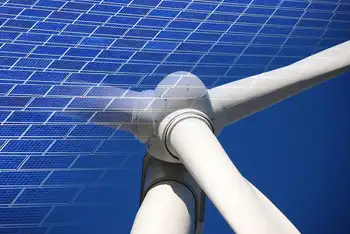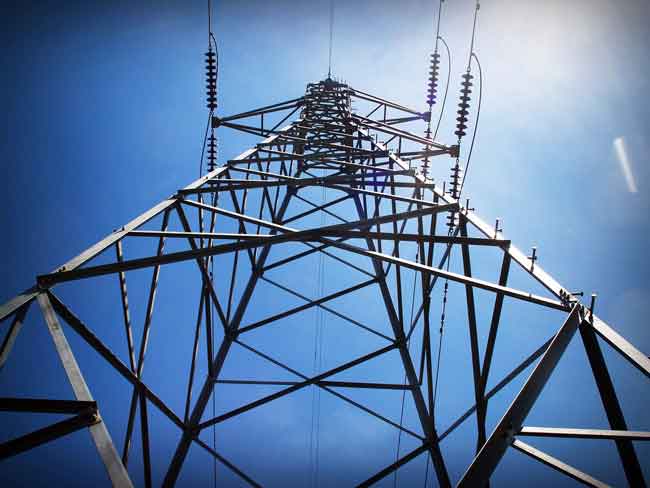Ways to save on your power bill
By Toronto Star
Substation Relay Protection Training
Our customized live online or in‑person group training can be delivered to your staff at your location.

- Live Online
- 12 hours Instructor-led
- Group Training Available
To encourage people like Trepanier, who lives in Ottawa, to use off-peak hours, when electricity is in low demand and cheaper, the Ontario Government introduced Smart Meters which track how much electricity households use and at what times. On the May 1 weekend the government will roll back the start of off-peak use to 7p.m. until 7.a.m. so more people can take advantage of the savings. Weekends are also considered off-peak hours.
The changes that Trepanier made to cut down her bill werenÂ’t difficult and were easy to keep up. She waited until the weekend to do laundry, didnÂ’t run her dishwasher until it was full and turned off the lights when she left a room.
“It wasn’t a huge lifestyle change. I just had to be conscious of when I was doing certain things,” said Trepanier.
With the price of hydro steadily on the rise, there are several small and easy changes you can make to keep your bill as low as possible. They include:
Electronics
A lot of your hydro bill could be eaten up by ‘phantom power’, which is the electricity drawn even when an electronic device or appliance is not in use but still plugged in. This can account for up to 15 per cent of a household’s electricity use, or as much as $18.75 on the average household’s hydro bill. Using a programmable power bar to charge your electronics during off-peak hours can cut that cost in half.
Change your lights
Compact Fluorescent Bulbs CFLs use up to 75 per cent less energy than standard bulbs. According to Toronto Hydro, the average home has 30 light fixtures that consume close to $200 worth of electricity every year. By replacing five bulbs with ENERGY STAR qualified CFL bulbs in areas that require more than three hours of light a day saves approximately $30 a year.
Use a programmable thermostat
When Matthew Mackenzie’s parents became ‘snow birds’ a few years ago, he looked into ways to cut their home’s energy use while they were away. He programmed their thermostat to stay at 18°C during the winter months compared to the 22°C they usually left their home. This saved them around $15 on their electricity bill each month with minimal effort. Properly set, a programmable thermostat can reduce heating and cooling costs by up to 10 per cent.
DonÂ’t be afraid to use ceiling fans
Fans are a great use of energy and can help keep your bills down. If you run them at the same time as the air conditioner, you can raise the temperature setting by 2°C, reducing your energy use by at least 10 per cent, according to the Ontario Energy Board.
Dishwashers
Run your dishwasher during off-peak hours and only when it is full. Use the air-dry setting or leave the door open to naturally dry the dishes. Running your dishwasher during off-peak hours can save you about half the electricity charge than running it during peak hours.
Barbecues
According to Toronto Hydro, the cost of preparing a meal on an electric stove is cheaper than using a propane-run barbecue, especially during off peak periods. However, a natural gas fired-stove or barbecue is approximately 20 to 30 per cent cheaper in price than an electric stove.
Dryers
Just like the dishwasher, you can cut your energy cost almost in half by running your dryer during off-peak hours. Also remember to keep your lint trap clean. Moisture can more easily pass through a clean lint trap, making your dryer more efficient.
Clothes Lines
Forego the cost of drying your clothes all together! Take advantage of summer weather and put your clothes on an outdoor clothesline to dry. If you donÂ’t have enough room outside, you can air dry your clothes inside using a drying rack.
Washers
The most important thing to do to save money is run your washer using cold water, which cuts back electricity 85 to 90 per cent. Wait to do a full load of laundry, and do it only during off peak hours or weekends. When buying a new model, look for an ENERGY STAR qualified front-load model to reduce water use by almost 45 per cent and energy use by about 65 per cent.
Refrigerators
Your refrigerators can be one of the biggest electricity users in the home. If youÂ’re in the market for a new fridge, look for the ENERGY STAR symbol, which means it is at least 15 per cent more energy-efficient than the minimum federal standard and uses half as much electricity as a fridge thatÂ’s 10 years old. If you have an old fridge, and arenÂ’t sure what to do with it, you can look into the Great Refrigerator Round Up offered by the Ontario Power Authority. Visit www.everykilowattcounts.com to learn more about this program.
Freezers
Keep your freezer at -18°C. Setting your freezer colder than that will use more electricity. Remember that a full freezer operates more efficiently than a near-empty one. It is also important to keep 5 cm of space around your freezer so heat can circulate away from the compressors and condensing coil.
Showers vs. baths
Having a shower in the morning instead of a bath can drastically cut back your hydro bill. A five minute shower at 7 a.m. costs 20 cents, compared to a bath at the same time, which is more than double the cost at 50 cents.
Microwave vs. electric stove
Microwaves use up to 50 per cent less electricity than an electric stove. If you need to reheat or cook something on the fly, use your microwave.
Window treatments
Window treatments can reduce heat loss in the winter and keep out the heat of the summer. During the winter months it helps to retain heat inside the home. During the summer months it reflects heat back to the sun. The most important windows in your home for energy conservation are the south, east and west sides as they get the most sunlight. If you donÂ’t want to treat your windows, blinds or window coverings will also do the trick.
Fall and winter
Make sure that the hydro you pay doesnÂ’t literally go out the door by weather-proofing your home. In the fall or early winter, weather-strip your home around doors, fireplace dampers, attic hatches and air conditioners. By reducing drafts, you could save up to 30 per cent a year on heating costs.
Programs
Like many provincial power authorities, Hydro One, in partnership with the Ontario Power Authority, offers a range of programs, incentives and tools to save on electricity at home. To view some of the programs and ways you can save, visit: http://www.hydroone.com/MyHome/SaveEnergy/Pages/Programs.aspx











